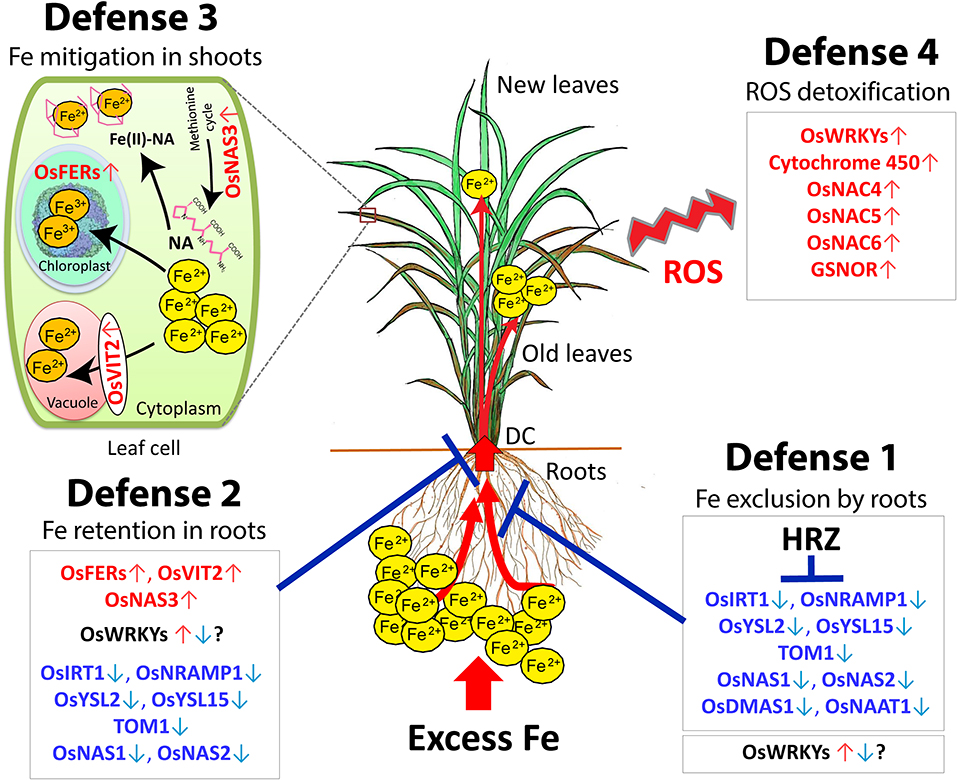- Department of Biological Production, Faculty of Bioresource Sciences, Akita Prefectural University, Akita, Japan
A Corrigendum on
How Does Rice Defend Against Excess Iron?: Physiological and Molecular Mechanisms
by Aung, M. S., and Masuda, H. (2020). Front. Plant Sci. 11:1102. doi: 10.3389/fpls.2020.01102
In the original article, there was a mistake in Figure 2 as published. OsNAS↑ instead of OsNAS3↑ in Defense 3. The corrected Figure 2 appears below.

Figure 2. Hypothetical model of the four defense mechanisms of rice against excess Fe. Defense 1: Fe excess tolerance by Fe exclusion in the roots. Defense 2: Fe-excess-tolerance by Fe retention in root and avoidance of Fe translocation to shoot. Defense 3: Fe excess tolerance by Fe compartmentalization in the shoot. Defense 4: Fe excess tolerance by ROS detoxification in the plant. DC, Discrimination center; NA, nicotinamine. Red letters, highly induced genes; Blue letters, highly suppressed genes. This figure is modified from the Supplemental figure of (Aung et al., 2018b). The ferritin image was provided by Dr. David S. Goodsell (Scripps Research Institute, La Jolla, CA) and the RCSB PDB.
The authors apologize for this error and state that this does not change the scientific conclusions of the article in any way. The original article has been updated.
References
Keywords: iron excess, rice, OsNAS3, HRZ, OsVIT2, ROS, iron homeostasis, tolerant mechanism
Citation: Aung MS and Masuda H (2020) Corrigendum: How Does Rice Defend Against Excess Iron?: Physiological and Molecular Mechanisms. Front. Plant Sci. 11:601527. doi: 10.3389/fpls.2020.601527
Received: 01 September 2020; Accepted: 09 October 2020;
Published: 20 November 2020.
Approved by:
Frontiers Editorial Office, Frontiers Media SA, SwitzerlandCopyright © 2020 Aung and Masuda. This is an open-access article distributed under the terms of the Creative Commons Attribution License (CC BY). The use, distribution or reproduction in other forums is permitted, provided the original author(s) and the copyright owner(s) are credited and that the original publication in this journal is cited, in accordance with accepted academic practice. No use, distribution or reproduction is permitted which does not comply with these terms.
*Correspondence: May Sann Aung, bWF5YXVuZ0Bha2l0YS1wdS5hYy5qcA==
 May Sann Aung
May Sann Aung Hiroshi Masuda
Hiroshi Masuda